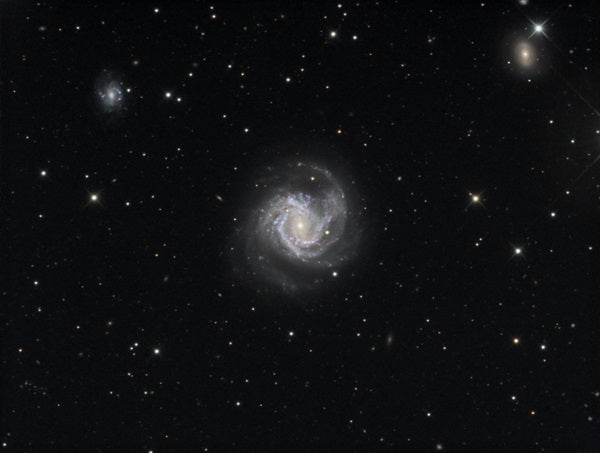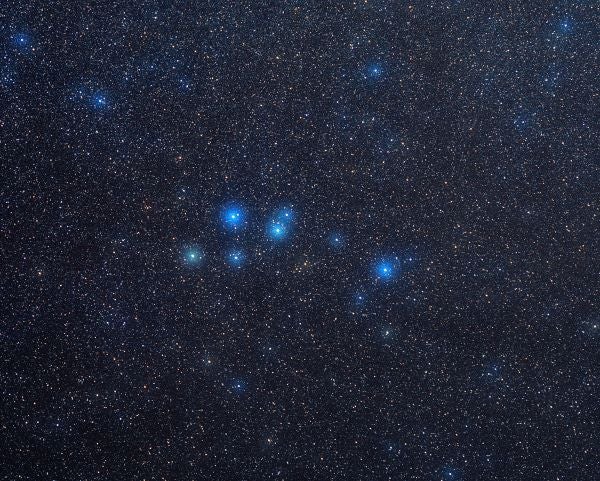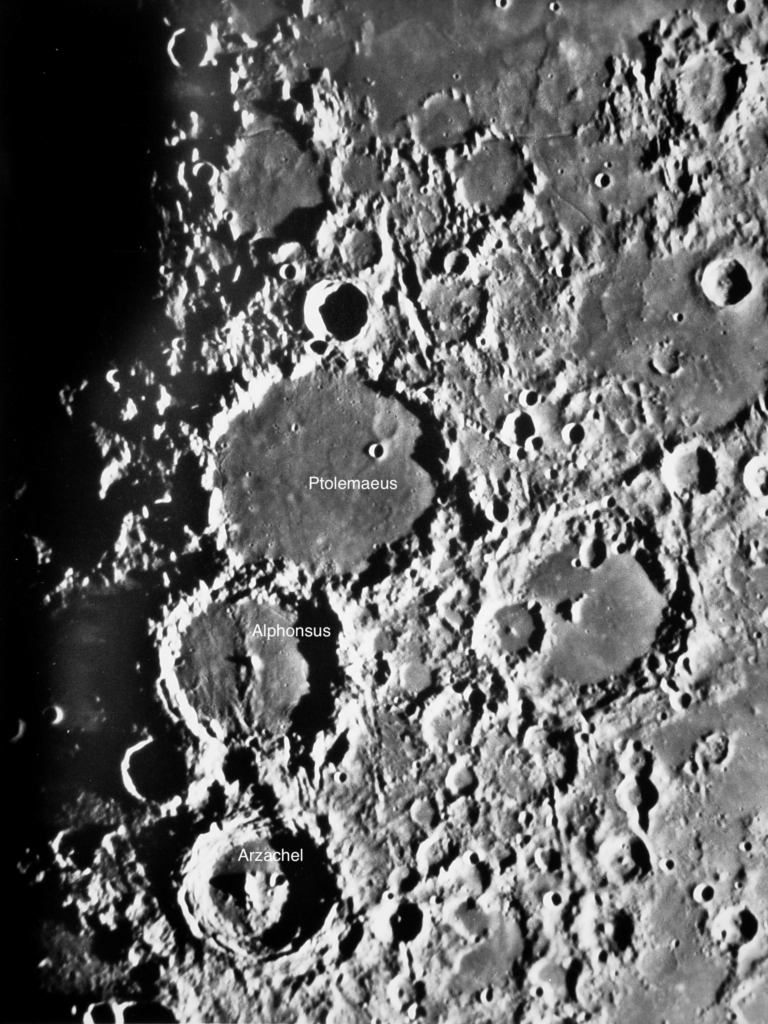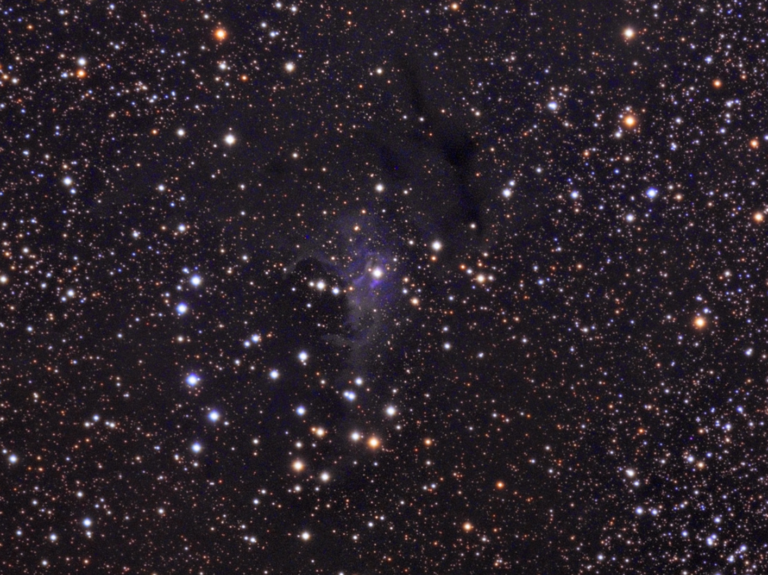M61 was a problem for Charles Messier from the start. He first encountered the spiral galaxy May 5, 1779, when he mistook it for a nearby comet whose path he had been tracking. He repeated this error the following night and then again on the 11th before he finally noticed that the “comet” had not moved against the stars.
Once Messier realized his mistake, he noted the “nebula that happens to lie on [the comet’s] path and at the same point in the sky,” probably confirming to him that these uncataloged objects were but a nuisance to comet hunters. No matter; Italian astronomer Barnabus Oriani had already discovered M61 on the same night Messier first noticed it. Oriani was also following the comet of 1779, but was not fooled. Messier must have chuckled at Oriani’s description of the object, as he called it “very pale, looking exactly like the comet.”
Today we know M61 as a prominent member of the Virgo Cluster of galaxies — despite its location nearly 10° south of the cluster’s heart. We see this nearly 100,000-light-year-long spiral wonder from some 55 million light-years away, giving us a glimpse of what our Milky Way would look like if seen face-on at such a distance. Like the Milky Way, M61 sports a small bar from which an intense inner spiral pseudo-ring displays hefty bursts of star formation, hinting at a lurking, central supermassive black hole.
M61 shines at a respectable magnitude 10 about 5° north and slightly east of Eta (η) Virginis. It lies roughly halfway between the 6th-magnitude stars 16 and 17 Virginis. Be warned: About a dozen NGC galaxies lie nearby, but M61 is the brightest. Its intensely bright core is surrounded by a much fainter disk that swells into view with 70–150x and averted vision. Moderate-sized telescopes may trace out the galaxy’s larger spiral structure. Images will reveal its two main luminous arms — one of which bends into two straight sections that meet at a sharp angle — as well as a multitude of fainter arms branching off the main arms. All these features are studded with star-forming regions, several of which appear as mottled patches. An especially large concentration appears near the northern end of the bar.
Make sure to explore Astronomy’s full list of 101 cosmic objects you must see. New entries will be added each week throughout 2022.
To get the latest astronomical news and observing content delivered directly to your door, subscribe to Astronomy magazine today!










